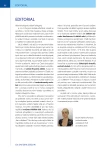ARTEFICIAL SOMATO-CNS-AUTONOMIC MICTURITION REFLEX – EXPERIMENTAL VERIFICATION
Authors:
Pavel Zerhau 1; Zdeněk Mackerle 2; Matěj Husár 1; Daniela Sochůrková 2; Eva Brichtová 2; Eduard Göpfert 3; Martin Faldyna 3
Authors‘ workplace:
Urologické oddělení KDCHOT FN a LF MU Brno
1; Neurochirurgická klinika FN u sv. Anny a LF MU Brno
2; Výzkumný ústav veterinárního lékařství Brno
3
Published in:
Ces Urol 2016; 20(2): 123-134
Category:
Original Articles
Overview
Major statement:
Results of experimental creation of somato-CNS-autonomic reflex and verification of its influence on lower urinary tract function in rabbits. Specifically the possibility of induction of the arteficial micturition reflex, applicable in patients with neurogenic bladder.
Purpose:
Intradural somato-CNS-autonomic anastomosis remains an insufficiently verified neurogenic bladder treatment method. Specifically, possible detrusor–sphincter synergy during artificial stimulation is unclear. The aim of the study is the assessment of rabbits’ lower urinary tract symptoms after this reflex arc’s creation.
Materials and Methods:
During 2012–2015, 37 male rabbits underwent laminectomy. Under electromyographic and cystometric controls ventral spinal roots leading to suitable musculocutaneous segments of the left hind leg (donor, L5–S1) and detrusor muscle (recipient, S2–S3) were located. After their resection, intradural anastomosis of donor root to the recipient distal root stub was performed. After 3–16 months the artificial reflex arc’s function was examined in 17 rabbits. Donor skin segments and spinal root above the anastomosis were stimulated. Detrusor EMG response, intravesical pressure and sphincter response were monitored.
Results:
Electromyography confirmed detrusor and sphincter response to peripheral skin stimulation in 8 (47 %) and 5 (29 %) cases. Five (29 %) animals displayed elevated intravesical pressure up to 15 cm H2O. Root stimulation induced detrusor and sphincter EMG response in 9 (53 %) and 7 (41 %) rabbits, respectively, and 4 (24 %) animals displayed increased Pves up to 15 cm H2O. Micturition was not induced in any animals. With confirmed detrusor contraction, external sphincter activity was never inhibited.
Conclusion:
Experimental creation of the somato- CNS-autonomic reflex arc is technically feasible. Reflex activity of this artificial arc is however detectable almost exclusively electrophysiologically. At the same time, the detection is possible only in a few cases. Induction of micturition reflex is not possible to initiate.
Key words:
Detrusor, intradural root anastomosis, neurogenic bladder.
Sources
1. Xiao CG, Schlossberg SM, Morgan CW, Kodama R. A possible new reflex pathway for micturition after spinal cord injury. J Urol. 1990; 143: 356A.
2. Xiao CG, de Groat WC, Godec CJ, Dai C, Xiao Q. “Skin-CNS-bladder” reflex pathway for micturition after spinal cord injury and its underlying mechanisms. J Urol. 1999; 162: 936–942.
3. Tuite GF, et al. Attempted bladder reinnervation and creation of a scratch reflex for bladder emptying through a somatic-to-autonomic intradural anastomosis: Case report. J Neurosurg: Pediatrics. 2013: 1–7.
4. Peters KM, et al. Outcomes of lumbar to sacral nerve rerouting for spina bifida. J Urol. 2010; 184: 702–708.
5. Peters KM, Gilmer H, Feber K, Girdler BJ, et al. US pilot study of lumbar to sacral nerve rerouting to restore voiding and bowel function in spina bifida: 3-year experience. Adv Urol. 2014; 2014: 863209. Published online 2014 Jun 2. doi: 10.1155/2014/863209.
6. Rasmussen MM, Rawashdeh YF, Clemmensen D, Tankisi H, et al. The artificial somato-autonomic reflex arch does not improve lower urinary tract function in patients with spinal cord lesions. J Urol. 2015; 193: 598–604.
7. Zerhau P, Mackerle Z, Husár M, Brichtová E, et al. Limitations in using rabbit bladders in electrophysiological and urodynamic experiments. Veterinární medicína, 2014; 59(8): 376–381.
8. Doležel J, Cejpek P, Miklánek D. Sakrální deaferentace a neurostimulace předních kořenů míšních v léčbě neuropatického močového měchýře u pacientů s kompletní transverzální míšní lézí – první klinické zkušenosti. Rozhl Chir. 2002; 81: 203–209.
9. Krhut J. Terapie neurogenních mikčních poruch. In: Krhut J, et al. Neurourologie, Galén, 2005; 1: 35–48.
10. Yoshimura N, Chancellor MB. Physiology and pharmacology of the bladder and urethra. In: Campbell-Walsh Urology, 10th ed, vol 3, Elsevier Saunders, Philadelphia, 2012: 1786–1834.
11. Xiao CG, Godec C. A possible new reflex pathway for micturition after spinal cord injury. Spinal Cord. 1994; 32: 300–307.
12. Xiao CG, et al. An artificial somatic-autonomic reflex pathway procedure for bladder control in children with spina bifida. J Urol. 2005; 173: 2112.
13. Stoller M. Needle stimulation (through the skin) for the treatment of incontinence. Quality Care. 1998; 16: 1–4.
14. Krhut J, Mainer K. Roční zkušenosti s využitím aferentní neurostimulace v léčbě hyperaktivního měchýře a syndromu pánevní bolesti. Praktická gynekologie. 2001; 3: 44–48.
15. Rejchrt M, Binek B, Schmidt M. Zhodnocení výsledků léčby hyperaktivity detruzoru perkutánní rezonanční elektromagnetickou neurostimulací (PRENS) a periferní neurostimulací nervus tibialis posterior (PTNS). Ces Urol. 2013; 17(Suppl 1): 39.
16. Rejchrt M. Využití neuromodulace v léčbě dysfunkcí dolních močových cest. Ces Urol 2012; 16(1): 5–12.
Labels
Paediatric urologist Nephrology UrologyArticle was published in
Czech Urology

2016 Issue 2
Most read in this issue
- THE CONSEQUENCES OF PENILE SUBCUTANEOUS APPLICATIONS OF THE FOREIGN MATERIALS
- NEPHROBLASTOMA – CURRENT EVALUATION AND TREATMENT
- BLACK ADENOMA OF THE ADRENAL GLAND
- KEY UROLOGICAL SURGICAL PROCEDURES IN THE CZECH REPUBLIC IN PERIOD 2009–2014
